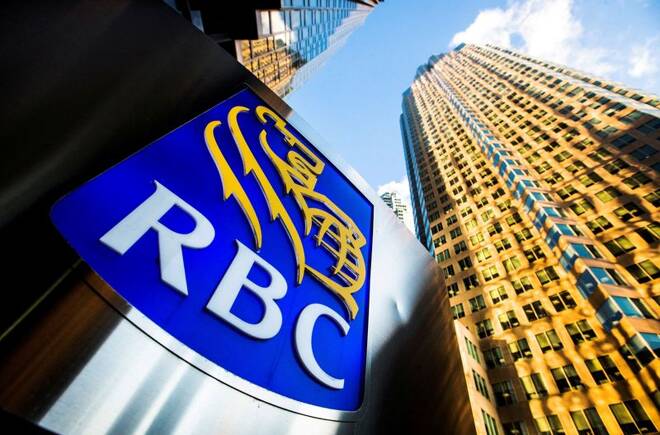Advertisement
Advertisement
Canada’s RBC, National Bank step up bad debt provisions, denting shares
By:
(Reuters) -Royal Bank of Canada (RBC) and National Bank of Canada, two of the biggest banks in the country, posted a drop in profits as their market-focused businesses took a hit from the central bank's hawkish monetary tightening campaign.
By Niket Nishant and Divya Rajagopal
(Reuters) -Royal Bank of Canada (RBC) and National Bank of Canada set aside more funds to deal with bad loans on Wednesday, denting fourth quarter earnings.
Investors wary of the impact of rapid central bank interest rate hikes marked down RBC and National Bank shares by 1.4% and 4% respectively, while Canada’s benchmark index fell 0.5%.
The Bank of Canada has raised rates by 350 basis points this year to tame inflation. While investors expect the pace to slow in 2023, borrowing costs are expected to stay higher for longer. That could slow so far resilient credit growth, analysts said.
“We should continue to see additional provisions on performing loans in subsequent quarters if the economic outlook continues to deteriorate,” Nigel D’Souza Investment Analyst at Veritas Investment Research, said.
“A bigger concern would be an increase in delinquency rates and PCLs (provisions for credit losses) on impaired loans. While we have seen higher delinquencies and impairments this quarter, these metrics continue to run below pre-pandemic levels.”
RBC, which on Tuesday announced plans to buy HSBC’s Canadian unit for C$13.5 billion ($10 billion), increased bad loan provisions to C$381 million compared to a C$227 million release a year ago, while National Bank built C$87 million in PCLs versus C$41 million recovery last year.
Bank of Nova Scotia on Tuesday more than tripled PCLs to C$529 million from a year ago.
“The lagging impact of monetary policy, combined with strong employment and significant liquidity, has likely delayed what may end up being a brief and moderate recession,” RBC Chief Executive Dave McKay said.
That boosted personal and commercial banking in the quarter for RBC and National Bank by 5% and 13% respectively.
James Shanahan of Edward Jones said RBC’s domestic loan growth is expected to be below trend for ‘several’ years as Canadian consumers manage high household debt.
The PCL is not “outrageous”, Allan Small, senior investment adviser at Allan Small Financial Group with iA Private Wealth said, adding: “The overall sentiment is that markets have a little bit more certainty in terms of the path the central bank is going to take.”
RBC and National Bank’s market-focused businesses took a hit in the fourth quarter, as deal-making slowed. Net income from RBC’s capital markets unit fell 33%, while National Bank’s financial markets segment posted a 14% earnings drop.
Excluding one-off costs, RBC earned C$2.78 per share, beating analysts’ average estimate of C$2.68, according to Refinitiv IBES data.
National Bank posted an adjusted profit of C$2.08 per share, below analysts’ expectation of C$2.24.
($1 = 1.3540 Canadian dollars)
(Reporting by Niket Nishant, Mehnaz Yasmin and Johann M Cherian in Bengaluru and Divya Rajagopal in TorontoEditing by Shinjini Ganguli, Maju Samuel and Alexander Smith)
Related Articles
About the Author
Reuterscontributor
Reuters, the news and media division of Thomson Reuters, is the world’s largest international multimedia news provider reaching more than one billion people every day. Reuters provides trusted business, financial, national, and international news to professionals via Thomson Reuters desktops, the world's media organizations, and directly to consumers at Reuters.com and via Reuters TV. Learn more about Thomson Reuters products:
Did you find this article useful?
Latest news and analysis
Advertisement
